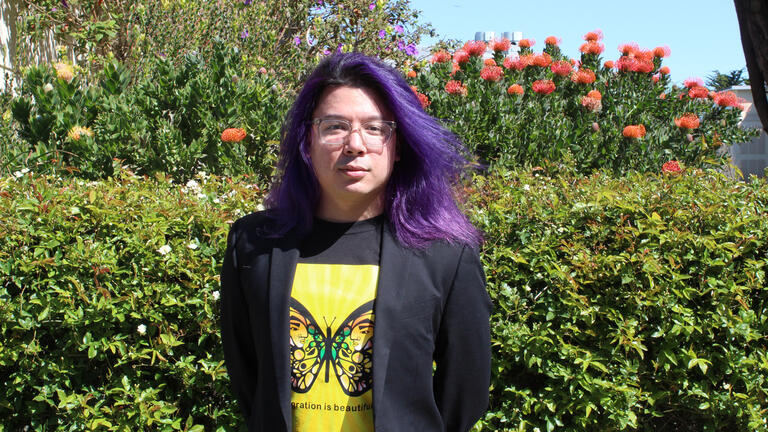Environmental Exodus
Environmentally displaced refugees will be the largest group migrating in the coming decades, causing us to fundamentally rethink our understanding of borders. This was the realization that Nik Evasco ‘19 (they/them) came to during their first semester in the Master in Migration Studies program at USF. While growing familiar with the academic body of work and its practical implications in life and society, Nik was shocked to find that there isn’t much academic work on the intersection of migration and environmentalism.
Nik answered up the call and began to fill the gap. Their research focused on the intersection of climate change and migration, exploring the legal and political protections for environmentally displaced migrants. Nik recently presented their most recent findings at a conference in Singapore, and a student research forum at USF. In the midst of their busy schedule, Nik took some time to discuss the work.
Start by telling me about the paper you presented.
The paper centered around environmental displacement and the lack of international relief for this class of migrant. I also included a discussion on “responsibility,” in terms of which countries are “causing” climate change and which countries are most impacted. This discussion leads to the understanding that while the Global North is reaping the benefits of climate and environmental destruction economically, the Global South faces severe negative impacts, causing significant internal and external migration.
I used a mixed methodology that focused on economic/development indicators and environmental indicators. For economic indicators I examined growth in terms of GDP and population. For environmental indicators I examined CO2 emissions, water use, etc. I also informed these indicators with case studies on Bangladesh, Kiribati and Malawi.
What were your driving questions?
How can the international community prepare for massive global migration with environmental displacement as the root cause? This question leads to a further inquiry of the prevailing migration: refugee/asylum model that provides “relief” for traditional migrants – labor, family reunification, travel, and/or student visa systems – and traditional forced displacement: generally from persecution or war.
What conclusions did you come to?
Conclusions indicate that Global South countries that profile similar to Bangladesh, Kiribati, and Malawi, will experience the harshest realities of climate change resulting in the highest needs for out migration. The current models for migration relief do not recognize environmental displacement, and the international community is significantly behind in reexamining the framework for centering human rights and migrant agency.
Where are you going from here?
Personally, I am focusing on this project as a way to refine my research and further expand on findings. This includes drafting a peer reviewed article that I will seek to publish. The ability to present this research in a manner that can contribute to the academic discourse is a major drive. This has been a huge focus of the Migration Studies program in general: the idea that as student scholars, we have the opportunity to contribute to the field and build lifelong careers from the work we do at USF.
Nik is currently seeking publication for their findings.
